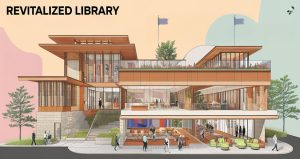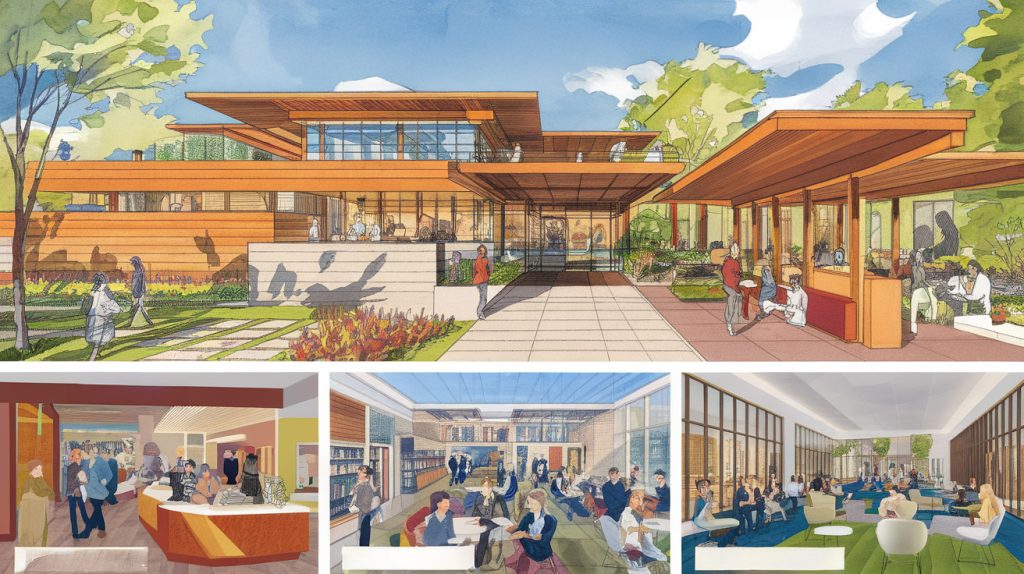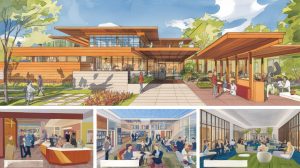Understanding the Imperative for Change
Libraries stand at a juncture in the road. No longer merely repositories of books, they have evolved into reading rooms and small workspaces where knowledge creation, community building, and social transformation intersect. As Bennett (2009) articulates in Library Trends, the 21st-century library must shift from a collection-centered to a learning-focused paradigm, fundamentally reimagining its role in community life. To truly understand how we can transform these spaces, we must first acknowledge that libraries are living organisms—breathing entities that must adapt to serve the ever-changing needs of their communities. For example, almost all of our work is focused on providing a variety of spaces – small workspaces, rooms and large adaptive workspaces with collaboration zones.
The urgency for transformation stems from multiple converging factors – funding and digital transformation. For example, digital information proliferation has fundamentally altered how people seek and consume knowledge (Lankes, 2016). Simultaneously, libraries face increasing pressure to demonstrate relevance and value in communities grappling with complex social challenges including digital divides, economic inequality, and cultural fragmentation (Mersand et al., 2019). For example, how many libraries have enough group rooms or spaces to study. These pressures demand not incremental adjustments but fundamental reimagining of library spaces and services.

Decoding Diverse Community Needs: A Multi-Dimensional Approach
Understanding diverse user needs in a digital world requires moving beyond traditional demographic analysis to embrace a more intensive, anthropological approach. Basically, Sung and Hepworth (2013) demonstrated in their ethnographic study published in Journal of Documentation that deep community engagement reveals layers of need invisible to surface-level analysis. We must talk and listen and learn what is needed to truly respond to the needs of today and tomorrow.
1. Ethnographic Immersion
Rather than relying solely on surveys, librarians must embed themselves within the community. For example, Khoo et al. (2012) advocate for “participant observation” methodologies that reveal authentic patterns of space use and information behavior. This involves observing how different groups navigate existing spaces—watching where students gather spontaneously, noting where older folks feel most comfortable, and identifying the maze-like spaces that prevent users from fully engaging with library space & resources.
2. Participatory Design Sessions
Transforming library spaces from passive zones to active creation spaces represents a fundamental shift in library planning. Bilandzic and Johnson (2013) document in Library Hi Tech how participatory design sessions at The Edge (State Library of Queensland) led to innovative space configurations that traditional planning would never have produced. Think about it, hosting design charrettes make a difference. Basically, it where community members literally sketch their ideal library spaces reveals needs that users themselves may not have consciously articulated—the desire for quiet contemplation zones, maker spaces for hands-on learning, or culturally-specific gathering areas.
3. Digital Footprint Analysis
Contemporary community analysis must include digital behavior patterns and use of the internet. Connaway et al. (2017) demonstrate in College & Research Libraries how analyzing online search patterns and digital resource usage provides valuable insights into information-seeking behaviors. For example, examining how your community seeks information online—what questions they ask, what resources they struggle to find—provides invaluable data for designing both physical and digital spaces that address unmet informational needs.
Current Space Utilization
Our course, analyzing current space use transcends simple occupancy metrics. Given and Leckie (2003) established in Library Quarterly that space usage patterns reveal complex social and cultural dynamics that shape library effectiveness.
Temporal Mapping
May and Swabey (2015) advocate for chronological documentation of space transformation throughout operational hours. Certainly, quiet reading rooms can become an impromptu tutoring centers in an adaptive environment. Understanding these organic patterns through systematic observation reveals the community’s true spatial needs and suggests flexible design solutions.
Behavioral Heat Maps
Andrews et al. (2016) demonstrate in Journal of Academic Librarianship how observational studies can create visual representations of movement patterns and dwelling spots. Analyzing where people pause versus where they rush through tells stories about comfort, accessibility, and purpose that inform evidence-based design decisions.
Sensory Audits
Evaluating spaces through multiple sensory lenses—lighting quality, acoustic environments, even olfactory experiences—reveals hidden barriers to use. Holder and Lange (2014) found that environmental factors significantly impact library usage patterns, with poor lighting or excessive noise deterring potential users regardless of service quality.


